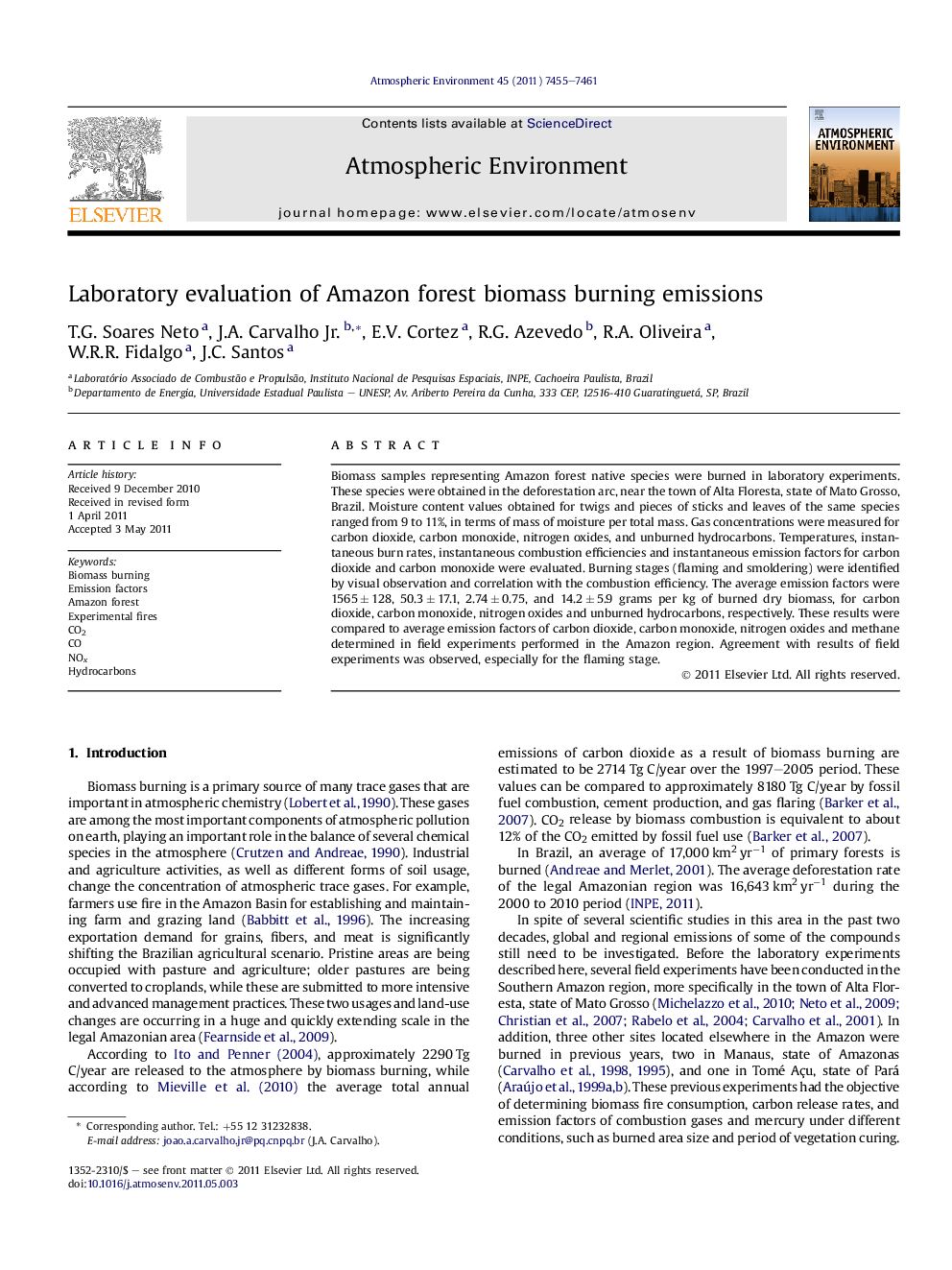| Article ID | Journal | Published Year | Pages | File Type |
|---|---|---|---|---|
| 4439182 | Atmospheric Environment | 2011 | 7 Pages |
Biomass samples representing Amazon forest native species were burned in laboratory experiments. These species were obtained in the deforestation arc, near the town of Alta Floresta, state of Mato Grosso, Brazil. Moisture content values obtained for twigs and pieces of sticks and leaves of the same species ranged from 9 to 11%, in terms of mass of moisture per total mass. Gas concentrations were measured for carbon dioxide, carbon monoxide, nitrogen oxides, and unburned hydrocarbons. Temperatures, instantaneous burn rates, instantaneous combustion efficiencies and instantaneous emission factors for carbon dioxide and carbon monoxide were evaluated. Burning stages (flaming and smoldering) were identified by visual observation and correlation with the combustion efficiency. The average emission factors were 1565 ± 128, 50.3 ± 17.1, 2.74 ± 0.75, and 14.2 ± 5.9 grams per kg of burned dry biomass, for carbon dioxide, carbon monoxide, nitrogen oxides and unburned hydrocarbons, respectively. These results were compared to average emission factors of carbon dioxide, carbon monoxide, nitrogen oxides and methane determined in field experiments performed in the Amazon region. Agreement with results of field experiments was observed, especially for the flaming stage.
► CO2, CO, NOx and UHC emission factors determined for Amazon biomass combustion. ► Laboratory results agreed with data for biomass combustion in field experiments. ► Combustion behavior under flaming and smoldering was analyzed.
